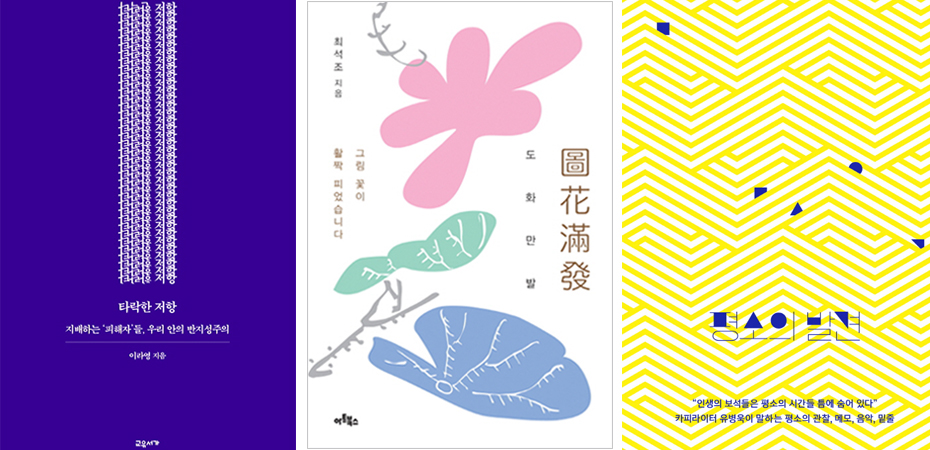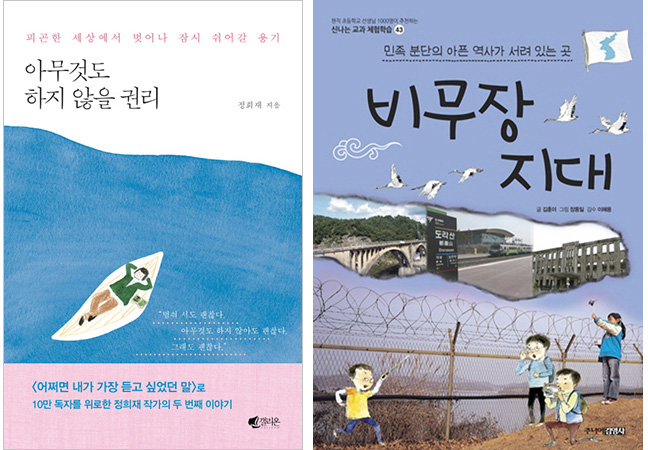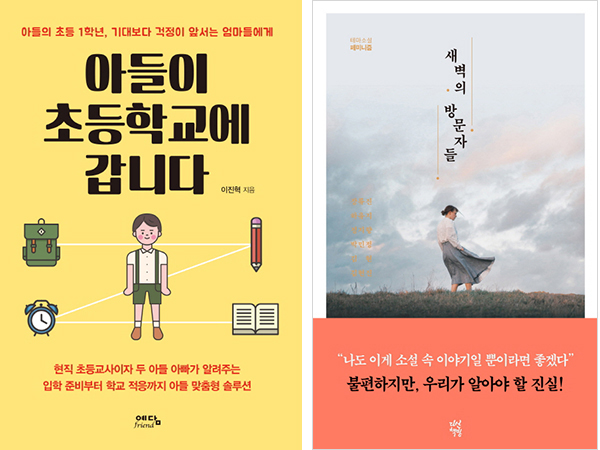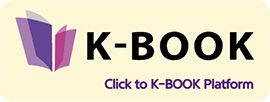|
South Korea's Imprint System in Publishing
2019.10.07
Most well-known South Korean publishers have several imprints (independent brands under the same publishing house). This number can go up to double-digits for large publishing houses, while smaller publishers' number of imprints is usually in the single-digit range. Imprints are a way for publishers to expand their publishing range as well as the size of their business and improve profits.
Imprints in South Korea are a way for publishers to expand their publishing range as well as the size of their business and improve profits, and today, imprints have become a natural part of publishing culture for publishers to run their businesses.
Currently, Munhakdongne Publishing Group dominates South Korea's publishing industry when it comes to imprints. Munhakdongne has 24 subsidiaries and imprints. The publishing house was established in 1993 as a literature-focused company with the motto, "Dreaming of the most active and creative path between humans and the world". Through its magazine and literary awards (novels, new writers, children's literature), the publishing company is at the forefront of the industry when it comes to discovering new Korean authors. It is also known for publishing an expansive range of literature, from non-Korean classics to the latest novels. In the case of foreign literature translations, editors will scrutinize translations, comparing them to the original text and in the case of some books for which several translations already exist, Munhakdongne will refer to those existing translations. The publishing company has quickly established itself as one of the country's representative publishing houses for literature. Some of its subsidiaries and imprints are as follows: 'Gyoyu Books' which specializes in liberal arts and general education; 'Geulhangari' that focuses on general education books on history, philosophy and science; 'Namueuimaum' for books on religion, the environment and ecology; 'Artbooks' for books on art; and 'Anibooks' for comics (source: Munhakdongne's official website). Munhakdongne says it is creating a plentiful and colorful world through its diverse subsidiaries and imprints that each have their own sound and light.
The Corrupted Resistance (Gyoyu Books), Flower Pictures Have Bloomed (Art Books),The Discovery of the Norm (Bookhouse)
Meanwhile, Minumsa Publishing Group is a company that has had its own in-house brands since the 1990s, which would make it the earliest of its kind. Founder Park Maeng-ho who established Minumsa in 1966 said in a collection of interviews that he had started brand diversification to avoid criticism from other publishers that too many Minumsa books were introduced by the media and out of the need to promote more Minumsa books in media. With the thought "to collect the people's righteous sound", Minumsa has become a large pillar of South Korea's book industry, publishing Korean and global literature as well as academic books. Some Minumsa brands include 'Biryongso (1994)' for children's books; Biryongso's subsidiary brands 'Gorilla Box' and 'Chameleon'; a science-specializing affiliated company called 'Science Books (1997)'; 'Minumin'; Minumin's faction brand called 'Golden Bough'; 'Panmidong' for religious books; 'Banbi'; and 'Semicolon' for visual content like art, design, architecture, photography, movies and comics.
Worm Forecast (Biryongso), Under the Closed Eye (Golden Bough), Real Study (Wiseberry)
Woongjin Thinkbig started out as a linguistics company, selling cassette tapes on English in 1980. After it saw great success in its door-to-door sales business, it changed its name to Woongjin Thinkbig in 2007. A large chunk of South Korea's publishing market is comprised of children's books. Woongjin publishes workbooks and reading material for children, and it also has a 'book club' program where customers can have educational content and reading material all in one tablet PC. Although it had more than 30 imprints at one point in time, the company found itself in financial hardship after it had aggressively expanded into other industries. Its publishing brands like 'Woongjin Junior', 'Leaders Book', 'Galleon' and 'Woongjin Jisikhouse' are well-known.
The Right to do Nothing (Galleon), Demilitarized Zone (Junior Gimmyoung)
Wisdomhouse Media Group came to be in 2005 after Yedam Publishing (founded in 1999) acquired Wisdomhouse in 2002. In 2012, the company made headlines as it launched the country's first podcast on books, called 'Lee Dong-jin's Red Bookstore'. Lee was a film critic at the time, and this podcast is popular to this day. Wisdomhouse mainly publishes books on economics, management, self-development and comics. Its subsidiaries include 'Yedam' for literature, liberal arts and art; 'Morning of History' for history books; 'A Harmonious Life' for religious and meditation publications; 'Yedam Friend' for educating children; 'Scholar' for children and teens' books; and 'Magic School' for educational books for young children.
My Son is Going to Elementary School (Yedam Friend), Visitors of Dawn (Dasan Chaekbang)
South Korea's imprint system is a type of testbed as well as a publishing industry model trend.
Imprints in South Korea's publishing industry are a diversification strategy for publishers as well as a type of testbed to increase operating profits. It is also a trend in publishing industry models that reflects the dreams and passions of publishers to release more books of various genres. In an age where brand value decides customer loyalty, South Korea's publishers and imprints forge on today to create books readers will love with their brand value.
Written by Won-Keun Baek (Books & Society Research Institute, President) Won-Keun Baek (Books & Society Research Institute, President) |
Pre Megazine
-

New Tarot Made With Korean Colors and Patterns!
VOL.69
2024.04 -

Please Look After Mom by Shin Kyung-sook
VOL.69
2024.04 -

Paper Play – A Great Way for Emotional Development, Concentration, and Creativity!
VOL.68
2024.03 -

Submit Us Your Reviews of Korean Books!
VOL.68
2024.03 -

A Miraculous Workout Routine for a Healthier Body!
VOL.67
2024.02 -

The Hottest Place in Korea, Right Here, Right Now!
VOL.66
2024.01 -

Kim Jiyoung, Born 1982 by Cho Nam-Joo
VOL.66
2024.01 -

Concerning My Daughter by Kim Hye-jin
VOL.65
2023.12 -

Bake Delicious Bread that’s Just Right for Your Taste
VOL.65
2023.12 -

Craft Your Own Special Miniature Furniture
VOL.64
2023.11 -

Take Beautiful Palace Tours With a Book
VOL.63
2023.10 -

A Guide to Beautiful Korean Handwriting
VOL.62
2023.09 -

An Offbeat Trip to Jeju Island
VOL.61
2023.08 -

Prepare for Disasters with a Single Book
VOL.60
2023.07 -

The Hen Who Dreamed She Could Fly by Hwang Sun-mi
VOL.60
2023.07 -

Feel the Street Vibes with Watercolor Painting
VOL.59
2023.06 -

Bone Soup by Kim Young-tak
VOL.59
2023.06 -

Eat Healthier and Tastier – Korean Vegan Food
VOL.58
2023.05 -

Almond by Won-pyung Sohn
VOL.58
2023.05 -

Learn About and Have Greater Fun Drinking Korean Alcohol!
VOL.57
2023.04 -

Knitting YouTuber Daeri Kim’s “Easy Modern Daily Knit”
VOL.56
2023.03 -

A New Section for Readers’ Reviews!
VOL.55
2023.02











